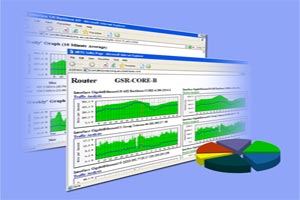
Network Troubleshooting

Network troubleshooting has become a crucial element to many organizations.
Failures in networks are characterized by certain symptoms. These symptoms might be general (such as clients being incapable of accessing specific servers, web-sites) or more specific (routes not existing in a routing table). Each symptom can be traced to one or more problems or causes by using specific troubleshooting tools and techniques. After being identified, each problem can be remedied by implementing a solution consisting of a series of actions.
Connectivity problems occur when end stations cannot communicate with other areas of your local area network (LAN) or wide area network (WAN).Connectivity problems include:
- Loss of connectivity - When users cannot access areas of your network, your organization's effectiveness is impaired.
- Intermittent connectivity - Although users have access to network resources some of the time, they are still facing periods of downtime. Intermittent connectivity problems can indicate that your network is on the verge of a major break.
- Timeout problems - Timeouts cause loss of connectivity, but are often associated with poor network performance.